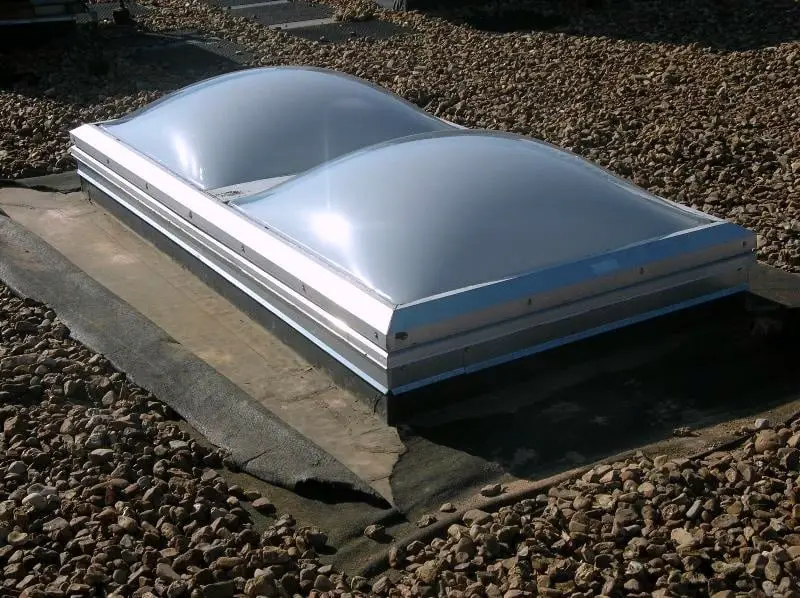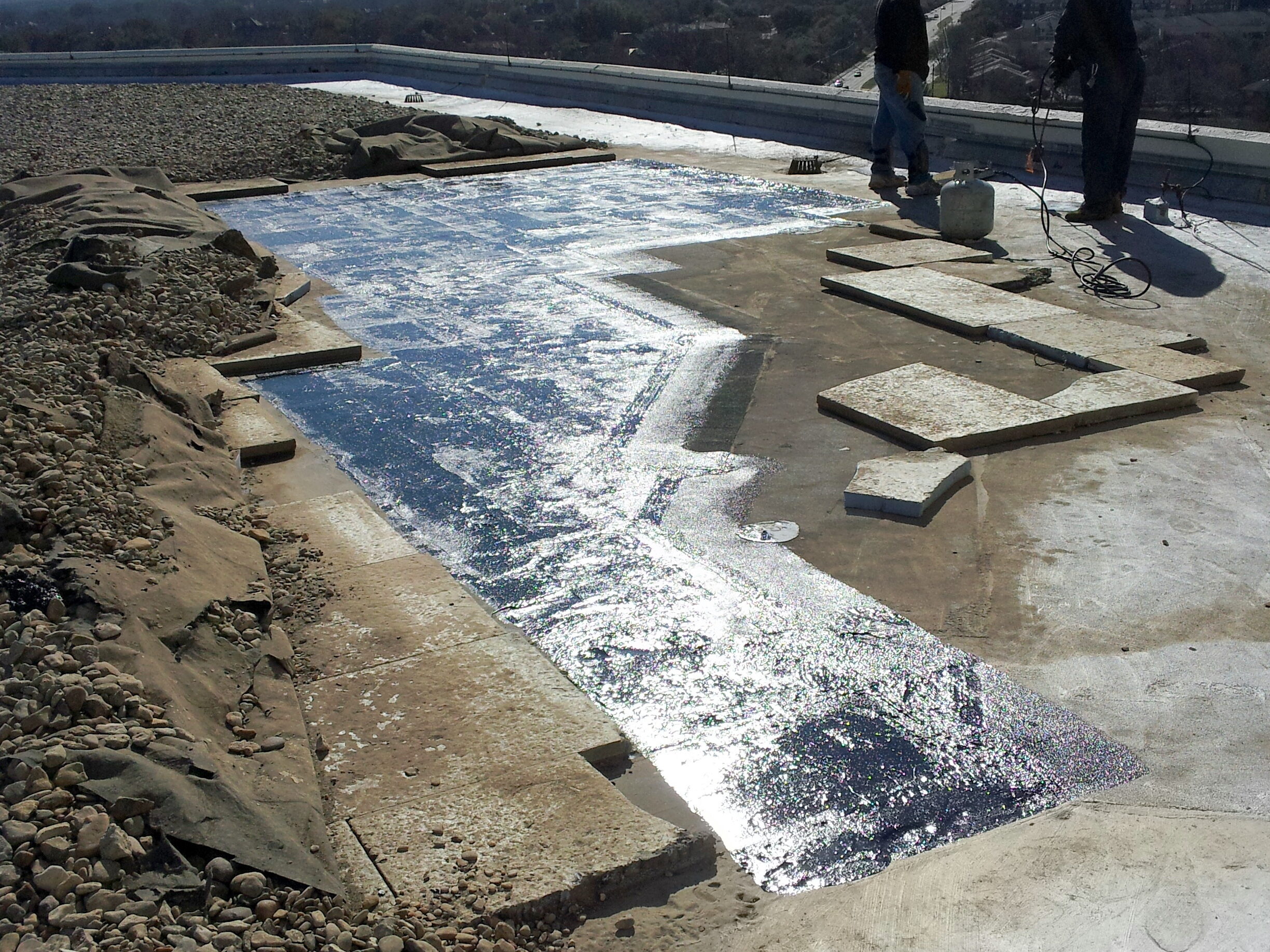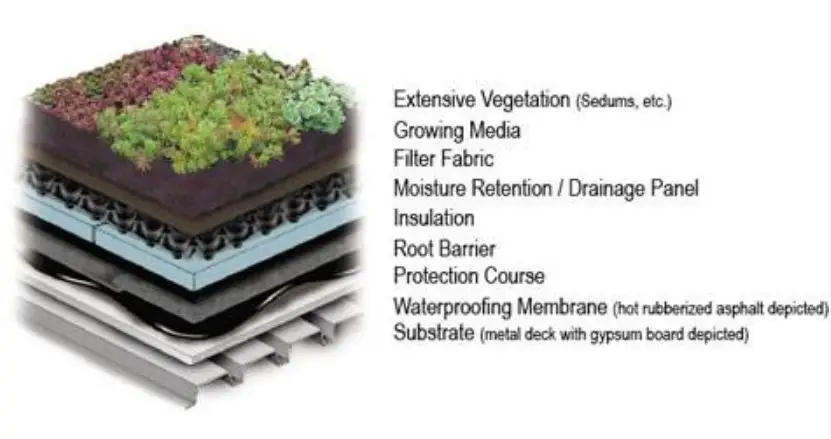Geotextiles (Filter Fabric) and Roofing: Information Guide
By Jack Gray, Roof Online Editor • Updated February 20, 2023

Geotextiles: Introduction
Geotextiles are permeable fabrics, typically made from long-lasting synthetic materials such as polyester and polypropylene, that are used in construction, civil engineering, and landscaping.
They are designed to perform separation, reinforcement, filtration, and drainage functions. Geotextiles are commonly used in large construction projects to separate and filter materials, to prevent soil erosion, for slope stabilization and other reinforcement applications, and to enhance the performance of artificial turf systems.
The two main types of geotextiles are woven and non-woven. Woven geotextiles are made from continuous filaments that are woven together, creating a fabric with a high tensile strength. Non-woven geotextiles are made from shorter fibers that are thermally or chemically bonded together.
Where the purpose of the geotextile is to prevent soil or other debris from entering a drainage system, non-wovens are preferred. Woven geotextiles are stronger and preferred for soil reinforcement and stabilization. Both types of geotextiles are available in a range of thicknesses and sheet dimensions to meet various project requirements.
Specific uses for geotextiles include:
- Separation: Geotextiles are used to separate different materials, such as earth, sand, gravel, and crushed stone to prevent soil mixing and to ensure that each layer remains stable and performs its intended function.
- Filtration: Geotextiles are used as filters to prevent soil particles from entering drainage systems, such as pipes or drainage mats, where it could impede water flow and contribute to clogs.
- Drainage: Geotextiles are used to enhance the performance of drainage systems by allowing water to flow through the fabric while preventing soil particles from entering the system.
- Reinforcement: Geotextiles are used to reinforce earthen structures at retaining walls, embankments, and slopes, increasing their stability and strength.
- Artificial Turf Systems: Geotextiles are used in artificial turf systems to provide separation and drainage, preventing the growth of unwanted vegetation in particular.
Geotextiles and Roofing
In the roofing industry, geotextiles are commonly referred to as filter fabric. Filter fabric is often used as a buffer to protect roofing membranes from the potentially sharp edges of aged ballast stone.
Filter fabric is also used in the construction of an inverted membrane roof assembly (IRMA), also known as a protected membrane roof (PMR), to keep ballast stone separated from and in position on top of the insulation layer.

The most common use of filter fabric main in roofing is as an important component of green roof systems.
Filter fabric is integral to green roof assemblies, where it serves several functions, including:
- Drainage Layer: Filter fabric is typically placed over various types of drainage mat to prevent soil and other debris from entering and then clogging the roof’s drainage system. The fabric allows water to pass through, but prevents soil particles from getting into the drainage layer underneath the growing medium found on most green roofs.
- Root Barrier: Very importantly, filter fabric serves as a root barrier, preventing plant roots from penetrating into the roofing system and causing damage to the roof membrane or waterproofing layer.
- Soil Stabilization: Filter fabric helps stabilize the soil layer, preventing soil erosion and migration, keeping the soil in place.
- Water Retention: Filter fabric can help to retain water in the soil, providing a consistent moisture level for the plants.

Related Articles
External Sources & References for Filter Fabric Information
1. General: For a quick overview of filter fabrics/geotextiles see this Wikipedia page. Not really anything here about the function of filter fabrics in roof construction, but it does explain what they are.
2. General: Geosynthetics Magazine: an online magazine with information and news about geotextiles and other geosynthetic products.
3. General: The Geosynthetic Materials Association (GMA) provides engineering support, business development opportunities, educational programming, government relations expertise and industry recognition.
4. General: The International Geosynthetics Society (IGS) is a learned society dedicated to the scientific and engineering development of geotextiles, geomembranes, related products, and associated technologies.
5. General: International Journal of Geosynthetics and Ground Engineering – This journal presents the highest quality fundamental and applied research on all aspects of geosynthetics and their applications.
6: General: The Geosynthetic Institute (GSI) is a consortium of organizations interested in, and involved with, geosynthetics. All types of polymeric geosynthetic materials are involved: geotextiles, geomembranes, geogrids, geonets, geocomposites, geosynthetic clay liners, geopipe, geocells, and geofoam.
7. Safety: See this material safety data sheet for health and safety information about filter fabric at the Henry Company website. This is only an example and other products and brands may be different.
8. Technical: See “Protected Membrane Roof Systems” at Buildings.com for an explanation of filter fabric’s role in protected membrane roof (PMR) or inverted roof membrane assembly (IRMA) roofs.
9. Technical: For a quick visualization, InterNACHI shows how filter fabric fits into a protected membrane roof.
10. Technical: See how filter fabric fits into a vegetative roof assembly (often called a “green roof”) on the Whole Building Design Guide site.
11. Technical: See this product data sheet for the technical characteristics of filter fabric at the Henry Company website. This is only an example and other products and brands may be different.
12. Purchase Filter Fabric: See geotextile fabric on Amazon.